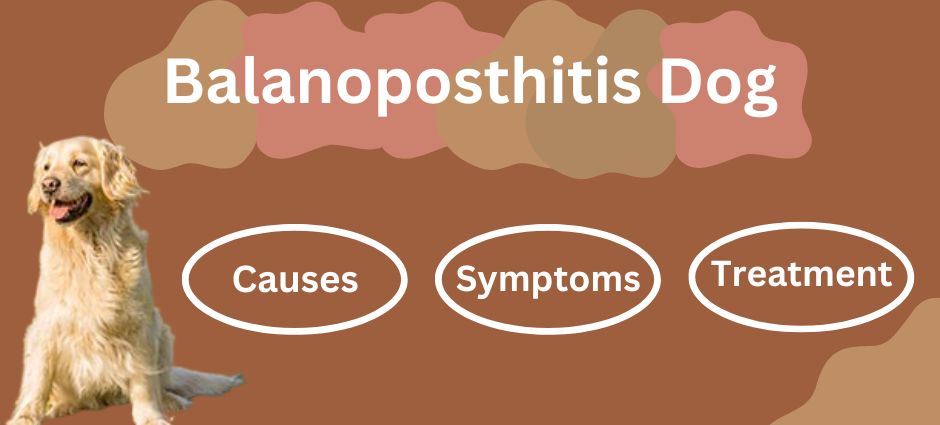When it comes to our dogs’ health, many conditions might not be widely known but are important to understand. One such unique condition is the balanoposthitis dog.
This blog will delve into what balanoposthitis in dogs is, its causes, symptoms, and the best ways to treat and prevent it, ensuring your dog stays happy and healthy.
So, are you ready? Let’s get into it!
What is Balanoposthitis Dog?
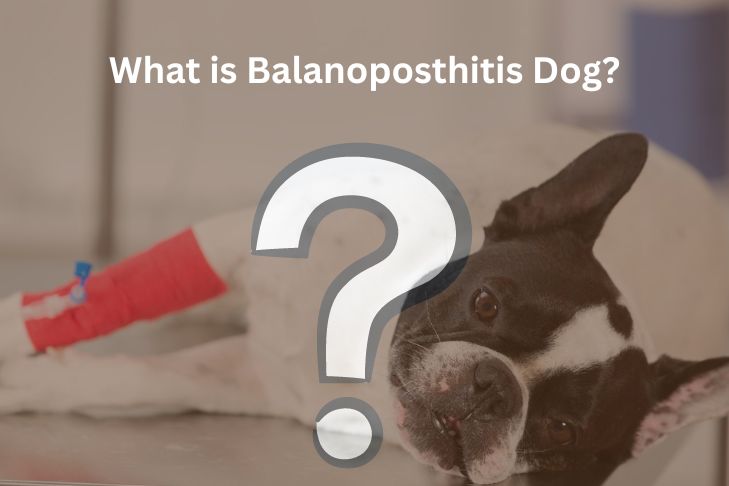
Balanoposthitis in dogs refers to the inflammation of the glans penis (balanitis) and the prepuce or foreskin (posthitis). This condition can cause significant discomfort and can be a sign of underlying health issues in your furry little dogs.
While it might sound complicated, understanding the basics can help you recognize the symptoms early and seek appropriate veterinary care.
Balanoposthitis Dog: Causes
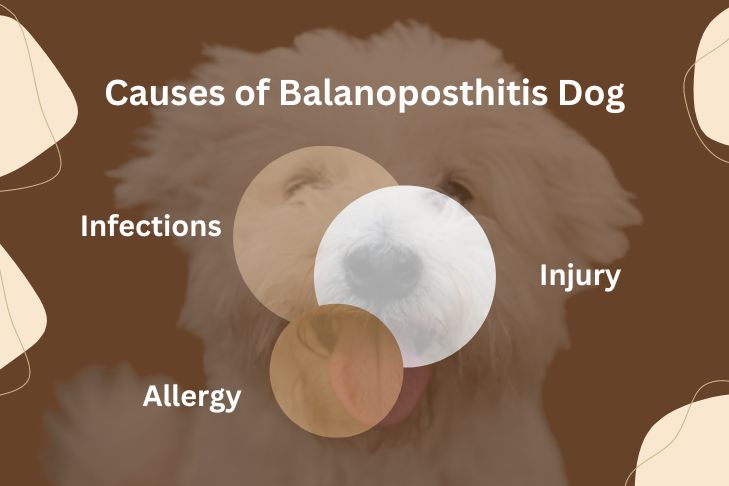
Several factors can lead to the development of balanoposthitis in dogs. Some of the common causes include:
- Infections: Bacterial, viral, or fungal infections are primary culprits. Bacteria such as Staphylococcus and Streptococcus can invade the area, leading to inflammation.
- Injury: Physical trauma to the genital area, including cuts, scratches, or bites, can introduce bacteria and cause inflammation.
- Foreign Bodies: Grass seeds, dirt, or other foreign objects can get trapped under the prepuce, causing irritation and infection in your giant fluffy dog.
- Allergies: Allergic reactions to environmental factors or certain foods can result in inflammation.
- Hormonal Imbalances: Conditions like hypothyroidism can predispose dogs to various infections, including those affecting the genital area.
Symptoms of Balanoposthitis Dog
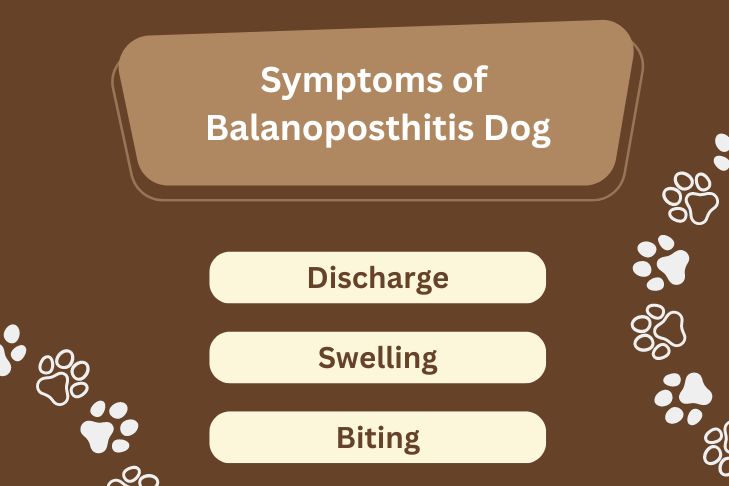
Recognizing the signs of balanoposthitis in dogs is crucial for timely intervention. Common symptoms of the diseases that are found include:
- Discharge: A yellow, green, or bloody discharge from the penis is a common symptom.
- Swelling and Redness: The prepuce and glans penis may appear swollen, red, and irritated.
- Licking and Biting: Dogs with balanoposthitis often lick or bite the affected area due to discomfort.
- Pain and Discomfort: Your pup may show signs of pain, especially when urinating or during physical activity.
- Odor: A foul smell can sometimes accompany the discharge, indicating an infection.
Balanoposthitis Dog: When should I see a Vet?

If you notice any symptoms of balanoposthitis in your dog, it’s crucial to consult a veterinarian promptly. Early diagnosis and treatment can prevent the condition from worsening and ensure your dog remains comfortable and healthy.
Balanoposthitis Dog: Diagnosis
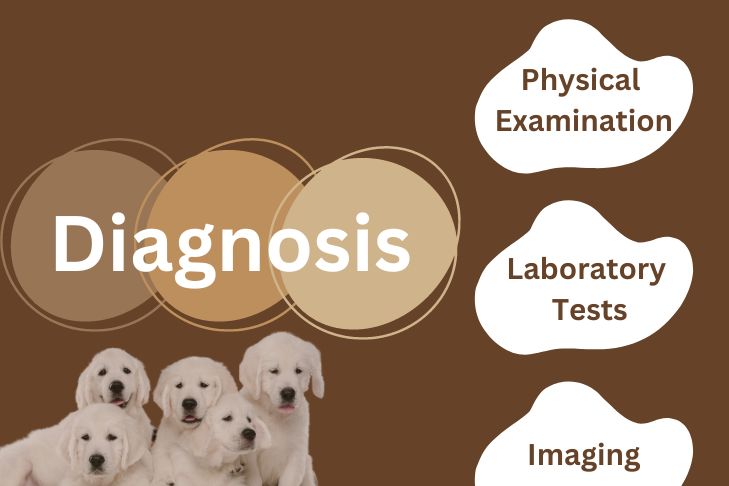
If you notice any of these symptoms in your dog, a visit to the vet is essential. The diagnostic process may include:
- Physical Examination: The vet will conduct a thorough physical examination of the genital area.
- Laboratory Tests: Samples of the discharge may be taken to identify the causative agents, such as bacteria or fungi.
- Blood Tests: These can help rule out underlying conditions like hormonal imbalances or systemic infections.
- Imaging: In some cases, X-rays or ultrasounds may be necessary to check for foreign bodies or deeper infections.
Treatment Options for Balanoposthitis Dog
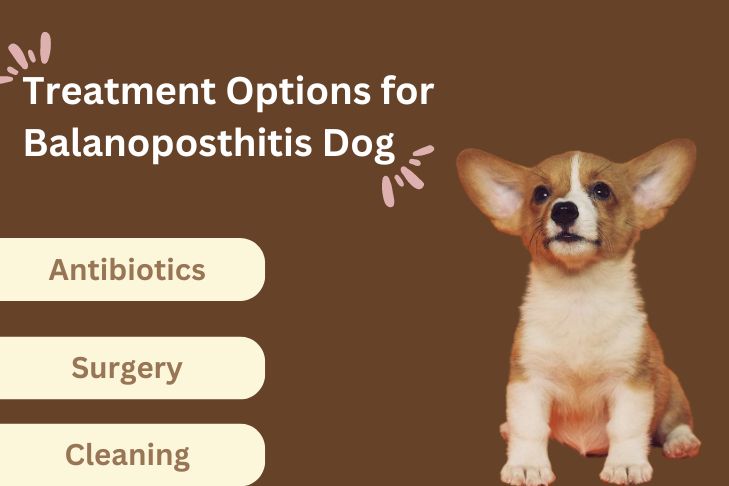
The treatment for balanoposthitis in dogs depends on the underlying cause and severity of the condition. Common treatment approaches include:
- Antibiotics: If a bacterial infection is identified, antibiotics are prescribed to eliminate the infection in your chunky dog.
- Antifungal Medications: For fungal infections, antifungal creams or oral medications may be used.
- Anti-inflammatory Drugs: Medicines can help reduce inflammation and relieve discomfort. For example, dosage of aspirin for dogs.
- Cleaning and Hygiene: Regular cleaning of the affected area with antiseptic solutions is crucial to remove debris and prevent further infection.
- Surgery: In rare cases, surgical intervention may be needed to remove foreign bodies or address severe trauma.
How to Prevent Balanoposthitis Dog?
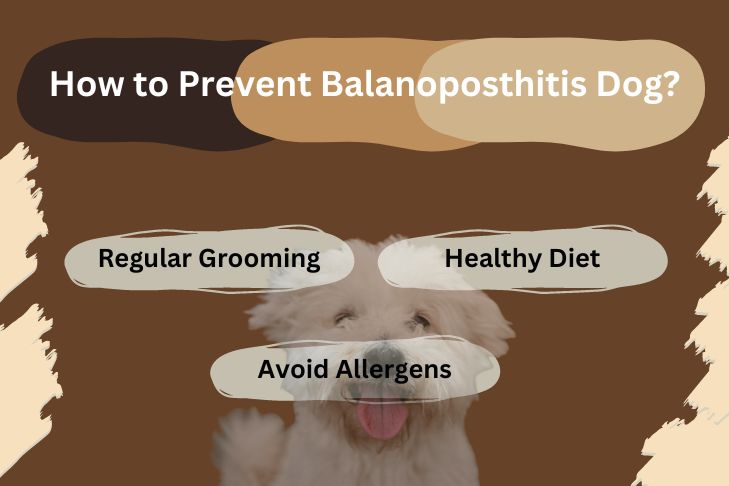
While it may not always be possible to prevent balanoposthitis in dogs, there are steps you can take to reduce the risk:
- Regular Grooming: Keeping your dog clean and well-groomed can prevent dirt and debris from accumulating in the genital area.
- Routine Vet Check-ups: Regular veterinary visits can help catch potential issues early and keep infections at bay.
- Healthy Diet: A balanced diet supports overall health and strengthens the immune system, making your dog less susceptible to infections.
- Avoiding Allergens: If your big white dog has known allergies, take steps to minimize exposure to allergens that could trigger inflammation.
- Monitoring and Immediate Action: Keep an eye on your dog’s behavior and genital area. Promptly addressing any signs of irritation or infection can prevent complications.
Conclusion
Balanoposthitis dog can be a concerning condition, but with proper knowledge and care, it can be effectively managed. Understanding the causes, recognizing the symptoms, and knowing the treatment options are key to keeping your furry friend in good health.
Regular veterinary care and good hygiene practices are essential in preventing this condition and ensuring your dog’s well-being. If you suspect your dog is suffering from balanoposthitis, don’t hesitate to seek professional veterinary advice.



